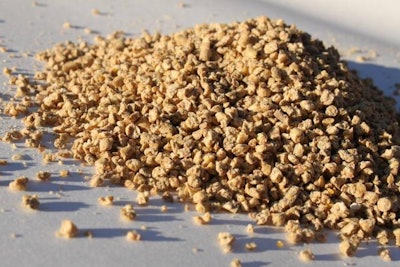
The regulations involving feed additives and ingredients in the European Union concern not only companies in Europe, but also all companies trading feed ingredients from all over the world. Many are left wondering what products can be used by EU feed manufacturers.
To answer, we first have to know what our animals may consume. The basic regulations for animal feed are put down in the European Parliament, Council of the European Union’s "Feed Regulation" (Regulation 767/2009), which focuses on feed materials, compound feed and complementary feed. Meanwhile, Regulation 1831/2003 is dedicated to feed additives and premixes.
Veterinary products are outside this scope and are organized by different regulations. Products with an effect outside of the animal, for example, for treating ectoparasites or insects, for disinfection, or for hygiene purposes in the building may be regarded as biocides and are also treated under different regulations.
This article identifies the resources companies can use to determine what ingredients can be fed to animals.
Catalogue of Feed Materials
Looking at feed materials, there is an off-spin of the Feed Regulation, called the Catalogue of Feed Materials. This Catalogue is a publication from the European Union and consists of a list of products that can be used in the animal feed industry. The first Catalogue appeared in 2011 and the idea is to update this list every two years. The second Catalogue appeared in 2013 and replaced the previous edition.
The third version has been in the works since 2015; it is planned to be published this year.
The Catalogue defines products and processes that can be used for feed materials.
An example of a process from the Catalogue is given below:

The process is then used to describe a feed material:

Specific labeling requirements may apply, as can be seen for the roasted barley.
The description may also relate to a specific condition of the product, such as rumen protection:

The EU Register of Feed Materials
Not all products are mentioned in this Catalogue. The EU Register of Feed Materials is another product list that can be used in the feed industry. This is a complementary list, set up by associations of the EU feed chain, representing suppliers of feed materials, traders, feed manufacturers and farmers.
This register is a spinoff from Regulation 767/2009, but is not an EU regulation by itself. The representatives of the feed business organizations publish this list and update it on a regular basis.
Companies can apply to get a product in this Register.
At the end, this list is not a license to put on the market products that are not legal as a feed material. The company that markets a product remains responsible for its quality. It is also the responsibility of the applicant that the product is legally regarded a feed material and not, for example, an additive, a veterinary product or a prohibited material and the company must also take care that the product meets all legal constraints.
Whether a feed material can be used also depends on quality issues. For example, it is described that a feed material must be free of chemical impurities and from processing aids.
An important difference between the Feed Register and the Catalogue, is that, for product lists in the Catalogue, it is possible that the products contain residues, but they must be specified if they are present at a level of 0.1 percent or above.

Feed materials that are genetically modified need authorization before they can be put on the market. There are specific regulations to obtain such authorization.
Navigating feed additives
There are no binding guidelines whether a product is a feed material or a feed additive. The principal purpose of a feed material is to meet the animal's nutritional needs. Feed additives perform one or more specific functions, as listed in Regulation 1831/2003, although feed products may include such functions as well.
Typically, feed additives are also purified and standardized for the claimed active substance. Sometimes it is difficult to choose whether a product should be regarded as a feed material or a feed additive. The European Commission has published a regulation defining the status of some products. Furthermore, the Commission tries to avoid the double function of a product, so when it is a feed additive, it should not appear in the Catalogue.
Feed additives are listed in the Community Register of Feed Additives, a spinoff from Regulation 1831/2003.
In 2005, the Register appeared for the first time and it was updated more than 200 times. The Register consists of two annexes.
Annex I lists additives which are allowed at present. An entry informs about the category and functional group under which the additive is registered and the designated code. Further, there is a reference and a link to the Regulation under which the additive is authorized. It also informs about the date of authorization, the expiration date and the date of first entry in the Register. The entry for clinoptilolite is given as example:

What people often do not know is that it is also possible to market additives that are listed in Annex II. It should be noted, however, that entries in this list will be deleted sooner or later. Careful attention is needed, as it may be possible that additives are listed in both Annexes but under different conditions. Clinoptilolite is also listed in Annex II:

Getting authorization for a new feed additive or a change of the authorization is based on Regulation 1831/2009 and is a complicated process. It very much depends on the kind of product what efforts are necessary.
Ed. Note: Regal B.V. is a consultancy experienced in regulatory issues related to feed and feed additives in the European Union, www.regal-eu.nl.

















